
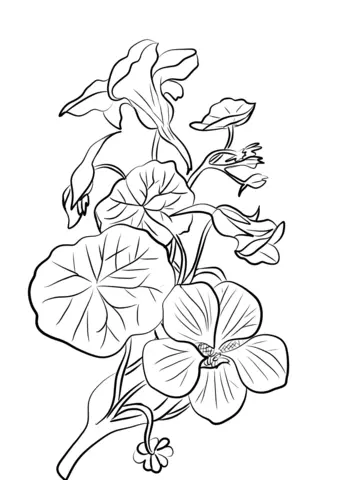
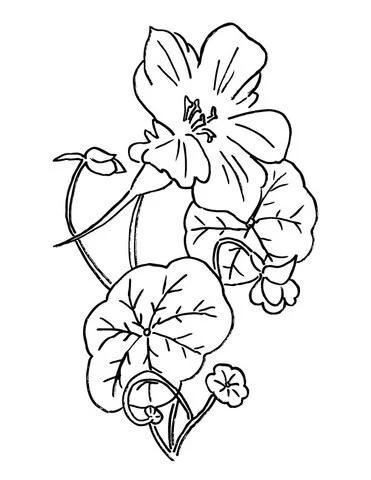
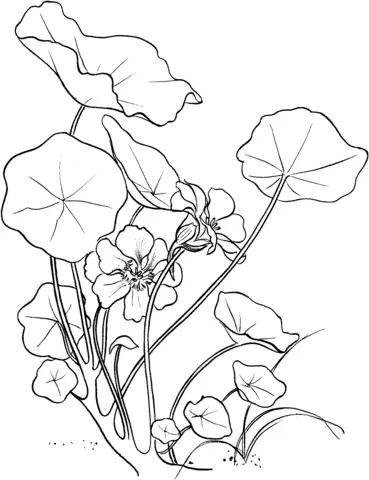
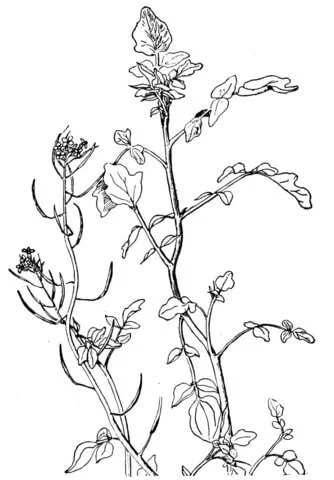
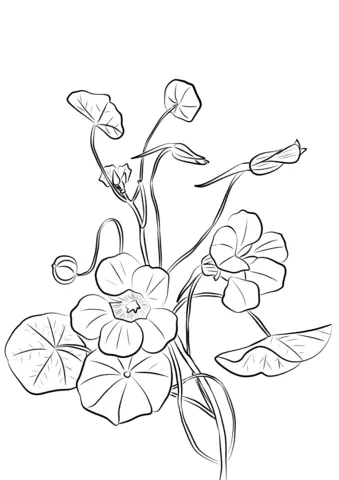
Delve into the enchanting universe of nasturtium coloring pages, where creativity blooms alongside the vibrant hues of these captivating flowers. Nasturtiums, with their striking colors and unique shapes, offer a delightful canvas for coloring enthusiasts of all ages. In this article, we will explore the allure of nasturtium coloring pages, providing you with a comprehensive guide to enhance your coloring experience and bring these beautiful flowers to life on paper.
Nasturtiums, known for their bold and vivid colors, are a favorite among gardeners and artists alike. Their blossoms range from fiery reds and oranges to soft yellows and creams, creating a stunning visual display. These flowers are not only visually appealing but also have a rich history and a variety of uses. Originally hailing from South America, nasturtiums have become a beloved addition to gardens worldwide. Their edible flowers and leaves add a peppery flavor to salads and dishes, making them a versatile plant both in the garden and the kitchen.
Coloring has long been recognized for its therapeutic benefits, offering a meditative escape from the stresses of daily life. Engaging in coloring activities allows individuals to express their creativity, improve focus, and achieve a state of relaxation. Nasturtium coloring pages provide a perfect opportunity to immerse oneself in the calming world of art, where each stroke of color brings these vibrant flowers to life. Whether you are a seasoned artist or a beginner, coloring nasturtiums can be a rewarding and fulfilling experience.
When selecting nasturtium coloring pages, consider the variety of designs available to suit your preferences and skill level. From intricate patterns to simpler outlines, there is a wide range of options to choose from. Look for pages that capture the essence of nasturtiums, showcasing their unique shapes and vibrant colors. High-quality coloring pages often feature detailed illustrations that allow for a more immersive coloring experience, enabling you to explore different shading techniques and color combinations.
To make the most of your nasturtium coloring experience, consider the following tips:
1. Select Your Medium: Choose coloring tools that suit your style and preference, such as colored pencils, markers, or watercolors. Each medium offers a different texture and finish, allowing you to experiment with various effects.
2. Explore Color Combinations: Nasturtiums are known for their vibrant colors, so don't be afraid to experiment with bold and contrasting hues. Consider using complementary colors to make your artwork pop.
3. Pay Attention to Details: Take your time to focus on the intricate details of the flowers and leaves. Adding depth and dimension to your coloring can enhance the overall appearance of your artwork.
4. Practice Shading Techniques: Shading can add realism and depth to your coloring pages. Experiment with different shading techniques, such as cross-hatching or blending, to create a more dynamic and lifelike representation of nasturtiums.
Integrating nasturtium coloring into your daily routine can provide a much-needed creative outlet. Set aside dedicated time for coloring, allowing yourself to unwind and focus on the present moment. Whether you choose to color alone or with friends and family, this activity can foster a sense of connection and shared enjoyment. Additionally, displaying your finished artwork can add a personal touch to your living space, serving as a reminder of the beauty and creativity that nasturtiums inspire.
In conclusion, nasturtium coloring pages offer a captivating and therapeutic way to explore the vibrant world of these beautiful flowers. With their rich colors and unique shapes, nasturtiums provide an ideal subject for coloring enthusiasts seeking to express their creativity and unwind. By selecting high-quality coloring pages and experimenting with different techniques, you can bring the enchanting beauty of nasturtiums to life on paper. Embrace the joy of coloring and let your imagination flourish with the vibrant hues of nasturtiums.